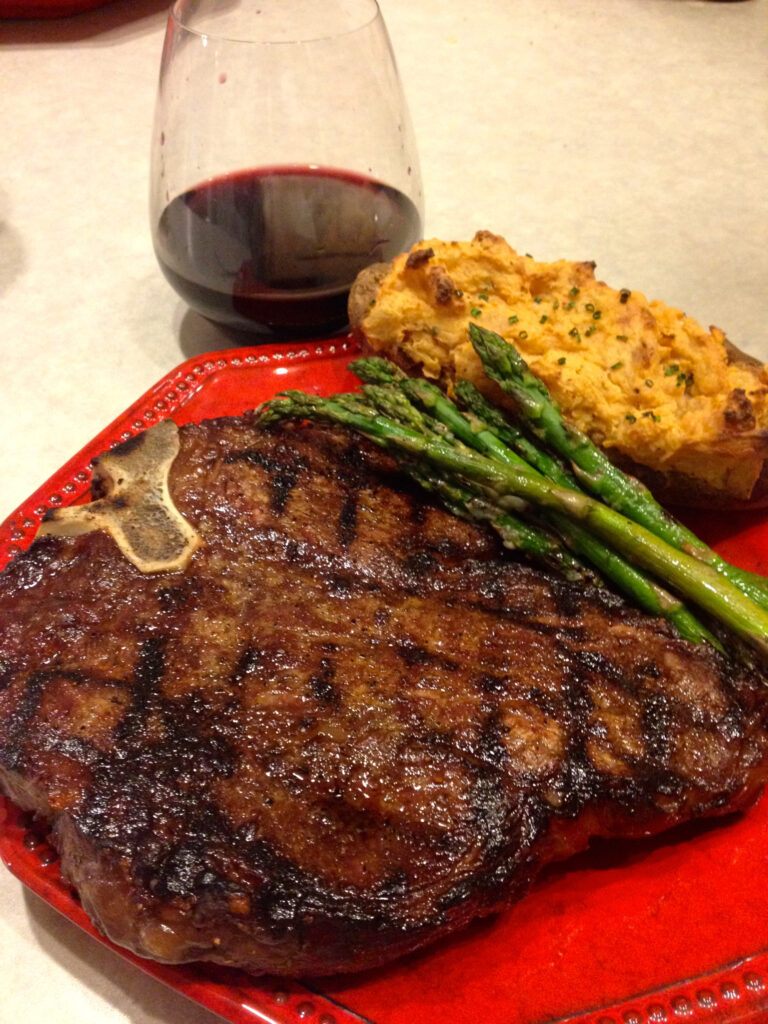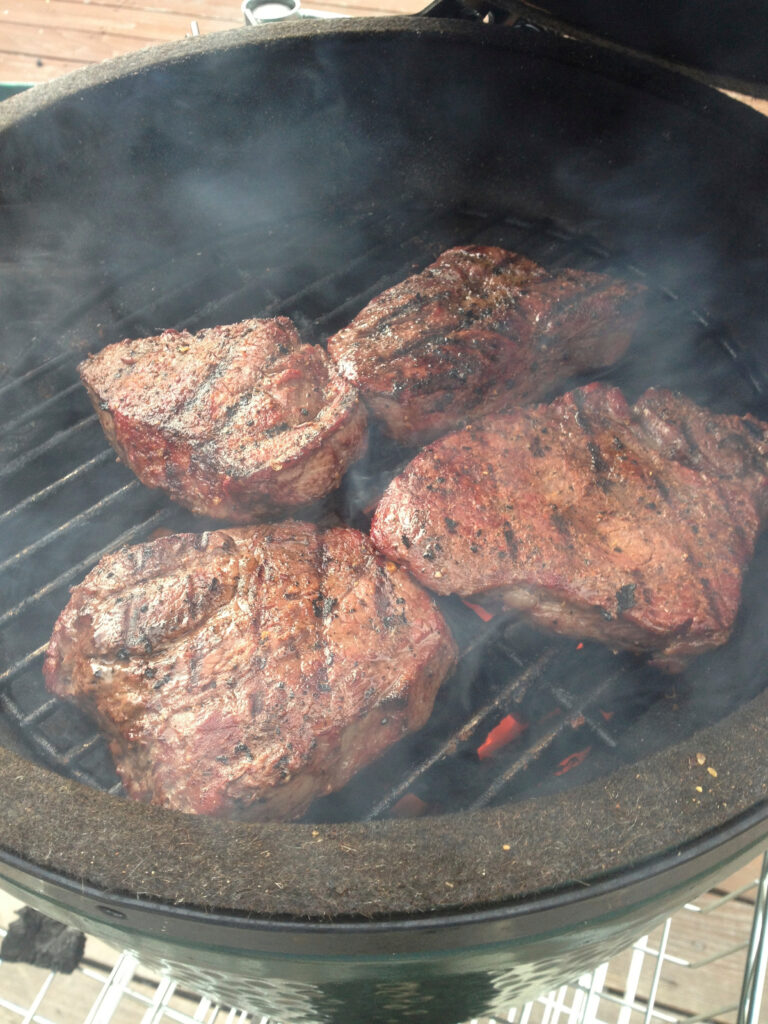The popularity of outdoor cooking on kamado grills like the Big Green Egg or Kamado Joe has people learning how to reverse sear a steak to cook the perfect steak from the comforts of home.
Today I will teach you the reverse sear method of cooking steaks.
What is the reverse sear method?
The method is simple. Instead of cooking your steak completely over hot flames or coals, you roast the steak to a specific temperature and then quickly sear it at the very end. This is mimicking the temperature in the oven with the temperature of the grill.
What you're left with is a perfectly cooked steak. Although I prefer to cook a steak over charcoal, this method works just as well using a gas grill.

The Benefits of the Reverse Sear Method
The reverse sear is the best way to cook a steak on the Big Green Egg or other charcoal grills.
This method works best with a thick steak and it gives the steak a consistent, edge-to-edge doneness with predictable results and a brown crust every time.
- Build a fire with charcoal oriented on one side of the grill. If using a gas grill ignite only the burners on the right or left side of the grill.
- Season liberally with salt and pepper
- Insert a digital probe thermometer into the centermost part of the steak.
- Roast the steak on the side of the grill away from the flame, flip the steaks and turn occasionally until it reaches an internal temperature of 105-110F.
- Sear the steak on the hot side of the grill over high heat for 60-90 seconds per side
- Remove from heat and allow the meat to rest covered on a plate for 10 minutes or until carryover cooking brings the steak to your desired doneness.
If your steak is too thin to use a roasting thermometer, check out this method of how we like to cook thin steaks on the grill.
The Disadvantages of the Reverse Sear Method
The main disadvantage of the reverse sear method is that it's not as quick as other direct grilling methods.
You will also need the help of a digital thermometer to complete the job. A leave-in thermometer is best but in a pinch, you can use an instant-read digital thermometer and check the temperature frequently.
How to reverse sear a steak
Reverse searing a steak consists of roasting the meat to get it close to your desired doneness and then finishing the meat by searing.
Be sure to generously season the steak before reverse searing to coax the maximum flavor.
Frequently Asked Questions
I like to cook to an internal temperature of 130-135F. Typically this means I will pull the meat 5 degrees less than my desired finish temperature.
Yes- Flipping the steak will not only promote even cooking but it will allow for more surface of the meat to get browned while cooking. That browned meat means additional flavor and you'd be shortchanging your taste buds without it.
The reverse sear method will always be the best method for grilling your meat to a specific doneness. It's far better than trial and error.
Plan on it taking a good half hour to reverse sear a ribeye. You can allow it to take longer if you are trying to get more smoke flavor on your steaks but 30 minutes or about 1-2 cold beverages is the perfect amount of time.
The reverse sear method does not change depending on the cut of meat but your final temperature may vary. Reverse searing is most typically used for meat you want to finish at a perfect medium. Although you could reverse sear tougher cuts of meat like brisket, chuck, or shank, it's likely they'd benefit from a slower, longer cooking method that helps the meat's collagen and connective tissues break down.
Yes, the method is still the same regardless of the cut of steak you plan on reverse searing. If you prefer to sear in a cast iron skillet feel free to doso but make sure you have a ripping hot pan.
Expert Tips
- Keep the seasoning simple - a good amount of salt and pepper is all you need to season the steak.
- For a thick steak, like a reverse sear ribeye steak, season it about an hour before cooking using a good amount of seasoning.
- Some people prefer searing the steak in a hot pan like a cast iron skillet to achieve a brown crust. If you choose this route, be sure to allow the skillet to preheat for at least 20 minutes over the high heat side of the grill.
- Don't be afraid to flip the steaks often. There's no harm when searing to flip frequently until you get color on the meat the way you desire.
What To Serve With This Recipe
Steak and potatoes go together like peas and carrots and I almost refuse to eat a steak without some kind of tuber tagging along.
One of my favorite side dishes is this crispy potato wedges recipe. The recipe calls for using an air fryer, but you can put the potatoes directly on the grill grates and cook them on the side away from the direct flame.
Another amazing potato side dish is this twice-baked potato recipe. Adjust the cooking method slightly by roasting the potato on the cooler side or the indirect side of the grill before stuffing it and baking it a second time using this method.
For a special treat, consider using the reverse sear method with Wagyu beef like the Wagyu sirloin we use in this recipe. You won't be disappointed!

By monitoring the internal temperature of the meat you know that it will be cooked to your desired doneness.
Allowing the meat to roast slowly enhances the flavor of the meat while keeping it juicy.
The reverse sear method takes the guesswork out of grilling the perfect steak.
Now if I can just figure out how to pick the perfect glass of wine to go with it.
I like how you let the steak rest for 10 minutes, it's a good time period to get the coals really hot for the searing part.